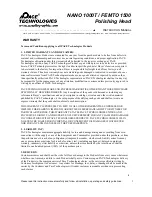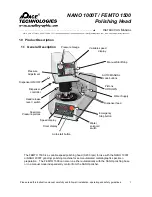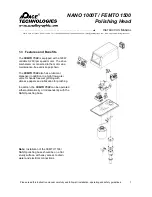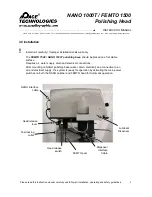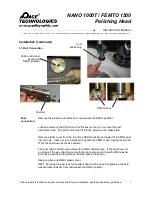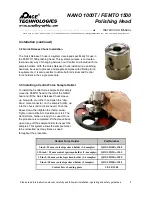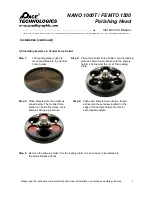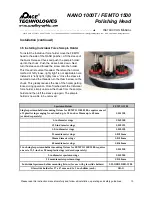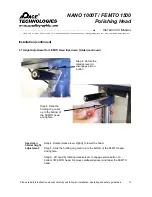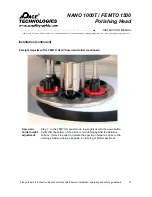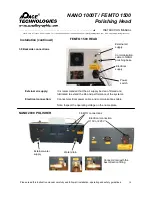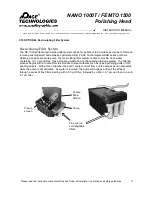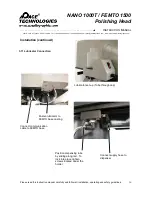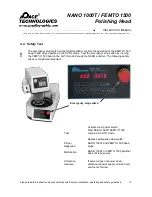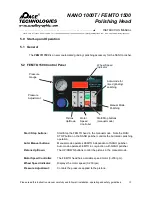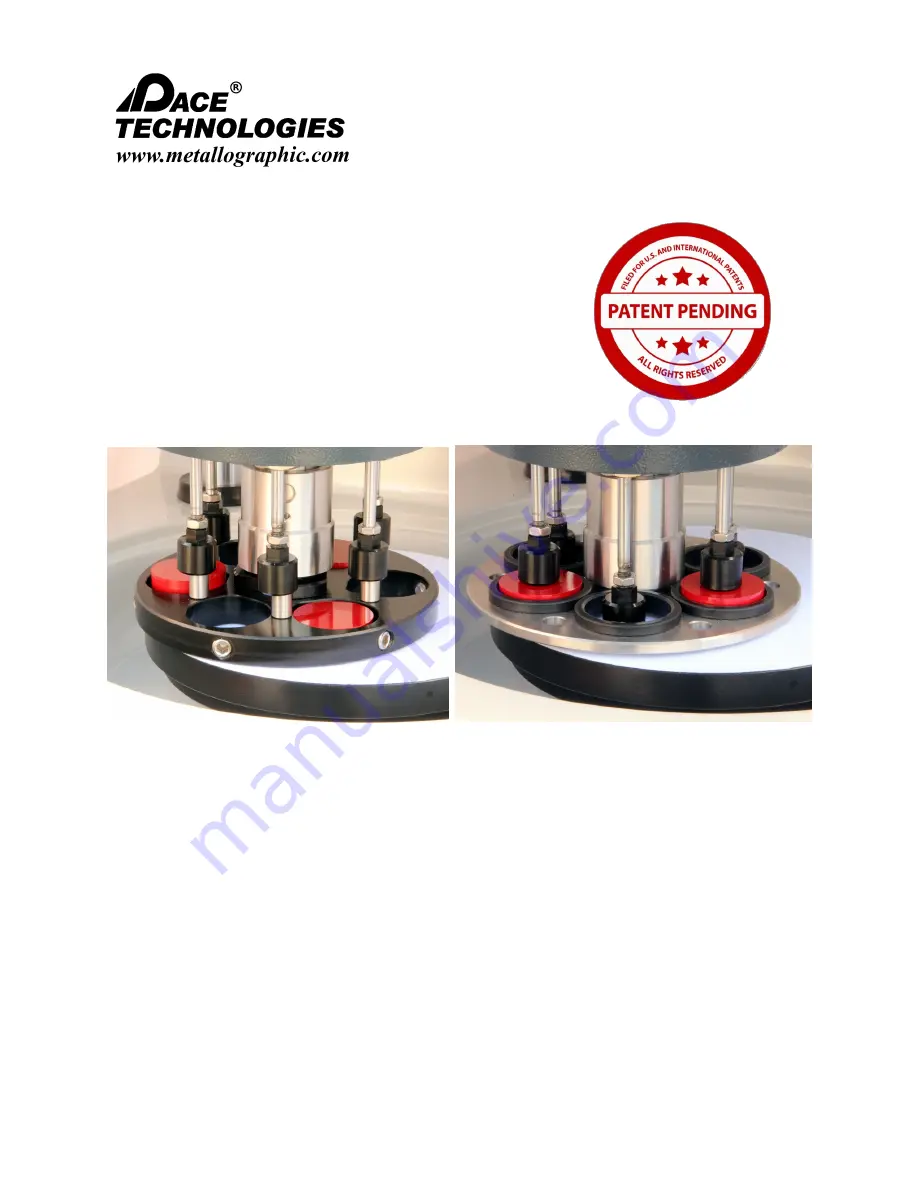
- - - - - - - - - - - - - - - - - - - - - - - - - - - - - - - - - - - - - - - - - - - - - - - - - - ▲
I
NSTRUCTION
M
ANUAL
3601 E. 34th St. Tucson, AZ 85713 USA Tel. +1 520-882-6598 Fax +1 520-882-6599 email: pace@metallographic.com Web: http://www.metallographic.com
4
Please read this instruction manual carefully and follow all installation, operating and safety guidelines.
NANO 1000T / FEMTO 1500
Polishing Head
1.4 Single Force vs. Central Force Comparison
Note:
With independent pistons, initial grinding can be done with finer abrasives, thus reducing the
number of grinding steps. For flatter specimen preparation a central force polishing system (FEMTO
1500 or FEMTO 2500) are recommended.
Central Force:
The individual pistons apply the
polishing force to the landing pads and pushes
down the holder through the spring loaded
central male coupler. For central polishing a
minimum of three samples locked into the holder
is required; however, flatness is then fixed over
all the mounted specimens
Individual Force:
Individual specimen force can
be applied using the Quick Release Chuck system
by screwing down the outside of the coupler so as
to lock the specimen mounting plate into a rigid
plane. This set-up allows for the individual holder
to be removed and cleaned. This holder also
eliminates the need to re-plane the samples if they
Single Force vs. Central Force Polishing Machines
Metallographic semi-automated polishing machines are available with
individual/ single specimen loading or with a fixed central holder. The
main advantage for using a central force holder is that the overall
specimen flatness is better. The primary advantages for individual
specimen holders are fewer required grinding/ polishing steps and
the ability to re-polish samples without the need to re-planarize the



